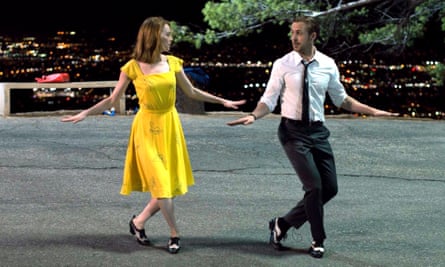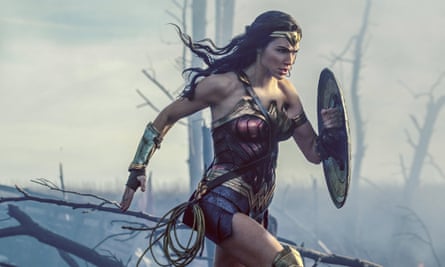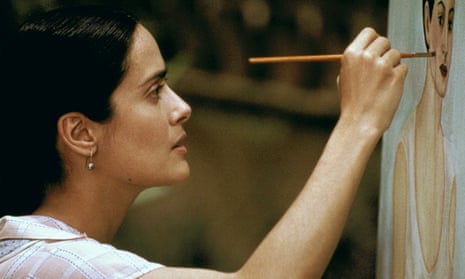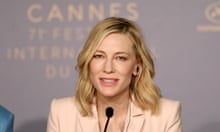In Salma Hayek’s blistering and upsetting account in the New York Times of the harassment and threats she received from Harvey Weinstein after she rejected his advances, there was a small but telling description of how deals in Hollywood were made – the sort of secretive, manipulative, imbalanced deals that enabled Weinstein to get away with his abusive behaviour for so long. As an actor in Frida, the biopic of Mexican artist Frida Kahlo that she had taken to Weinstein as her own project, Hayek wrote that she would be paid “the minimum Screen Actors Guild scale plus 10%. As a producer, I would receive a credit that would not yet be defined, but no payment.” This kind of remuneration – or rather lack thereof – for a producing role was not, she wrote, “that rare for a female producer in the 90s” (she doesn’t say whether she earned “back-end” money after the film’s success). She was excited, Hayek wrote, adding: “I did not care about the money … In my naivety, I thought my dream had come true.”
I wouldn’t like to second-guess the truth of this, but many women will be familiar with the stories they tell themselves about why they’re not paid as much as they should be, or as much as male peers. Hayek does it in her piece – she was a “nobody” (she wasn’t), she had been “lucky” (rather than talented) to land roles in Hollywood films – it was “unimaginable” for a Mexican actor to make it in Hollywood (true, but she had done it).
Melissa Silverstein, founder and publisher of Women and Hollywood, which advocates for gender equality, says that as a woman breaking into the film industry, there’s an expectation that you will be “very grateful”. Hayek, she says, had been in several films, and had the creative energy and drive to put together Frida (meeting, as she noted, some ludicrous demands about the film from Weinstein). “This great deal and still her value as a woman is not equal to the value of a man,” says Silverstein. “I think that’s the bottom line when we talk about gender and economic inequality in Hollywood, it’s about the value. People in Hollywood all have money attached to them, and the money attached to women is less than the money attached to men.”

In the year to June 2017, Forbes magazine found the top 10 male stars were paid nearly three times the combined earnings of the top 10 female stars. Emma Stone, the highest-paid – who won an Oscar for La La Land – made less than 14 male actors, including her La La Land co-star Ryan Gosling. Hollywood’s “quote” system – where an actor’s pay, and monetary worth, is calculated according to what they made on previous films – perpetuates women’s lower salaries, while continuously bumping up men’s. Stone said earlier this year: “If my male co-star, who has a higher quote than me but believes we are equal, takes a pay cut so that I can match him, that changes my quote in the future and changes my life.”
Actors who have spoken about being paid less than their male counterparts – and fight for equal pay – have included Robin Wright and Jennifer Lawrence. Earlier this year Jessica Chastain said: “I’m not taking jobs any more where I’m getting paid a quarter of what the male co-star is being paid.” For women of colour, the gap is even bigger – in her memoir, published last year, Taraji P Henson wrote of being paid less than 2% of what her co-star Brad Pitt was paid for The Curious Case of Benjamin Button. She didn’t expect the same – Pitt and the female lead, Cate Blanchett, were bigger names – but she was dismayed at her comparatively tiny rate. When women are under-represented across the board in Hollywood, and especially women of colour, the economics are stacked against them. “There are way more talented black actresses than there are intelligent, meaningful roles for them, and we’re consistently charged with diving for the crumbs of the scraps, lest we starve,” wrote Henson. “I knew the stakes: no matter how talented, no matter how many accolades my prior work had received, if I pushed for more money, I’d be replaced and no one would so much as a blink.”

It is important that women talk about pay, says Kate Muir, the former film critic, now a screenwriter. For the Wonder Woman sequel, Patty Jenkins is said to have asked for between $7m and $9m (£5m-£6.7m), making her the highest-paid female director. She described it as a “duty”. “I was extremely aware that I had to make sure I was being paid what the male equivalent would be.” (For comparison, the highest-paid male director is thought to be Christopher Nolan, who reportedly received $20m (£15m) for Dunkirk, which has grossed less than Wonder Woman.)
“That was a real watershed,” says Muir. Like many industries, and perhaps more than most, there is no structure to the movie business – deals are done here and there, and there is a lot of secrecy, she says. “There is no way of working out what’s going on unless people talk about it, and I think what we’ve learned from the sexual harassment scandal is that talking about these things in public really enables other people to talk about them and to look at the situation.”
Economic disparity in Hollywood matters because of what it says about women in the wider culture. “If people put a value on you and your value is a third less than a man, that affects the whole system,” says Muir. “The shadow that lies over the whole business is that we value men three times the way we value women.”
It was clear, wrote Hayek, that the main value Weinstein placed on women was sexual, rather than intellectual or economic. “The only thing he noticed was that I was not sexy in the movie,” she writes, going on to say that he demanded the film have a sex scene between her and another woman, with full-frontal nudity.
“If you’re valued less for your stories and for what you have to contribute,” says Silverstein, “that means you’re going to have less monetary value in the culture because your stories don’t count in the same way as male stories. If you don’t value women, then you don’t value women’s stories, women’s contributions, and you don’t pay them what they’re worth. It’s a vicious cycle.”








